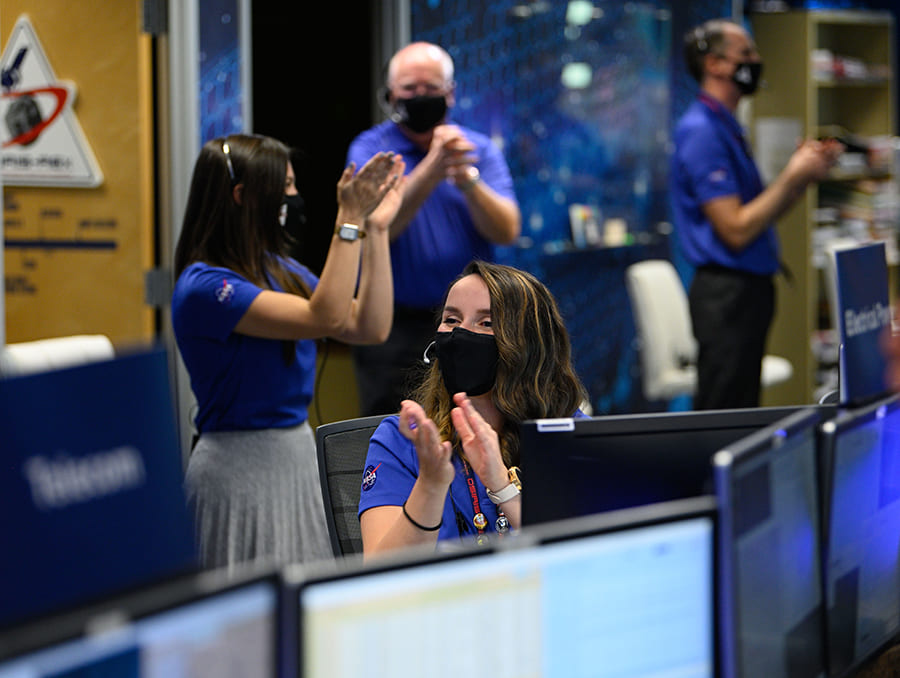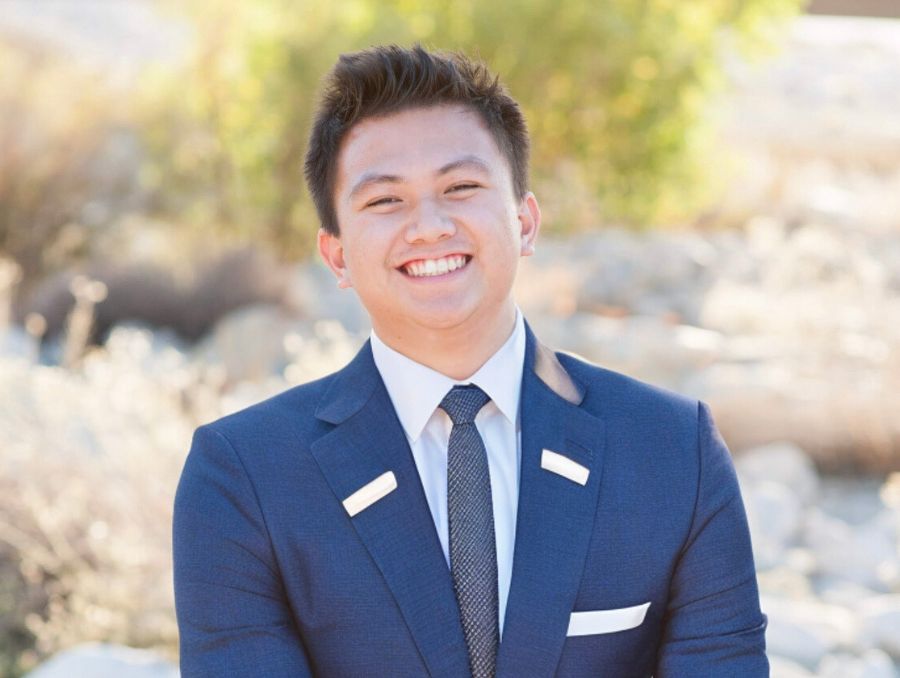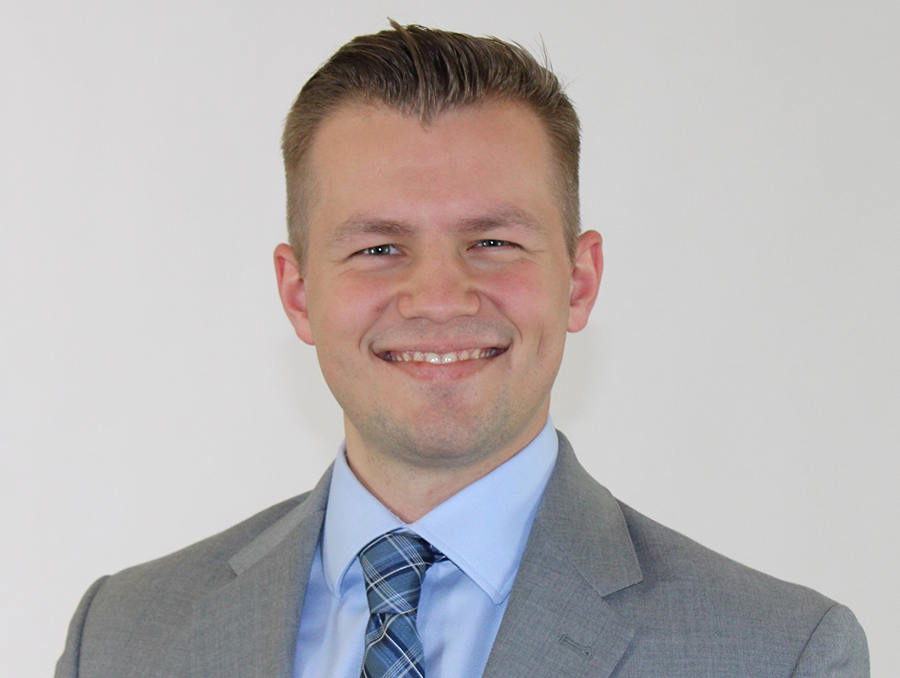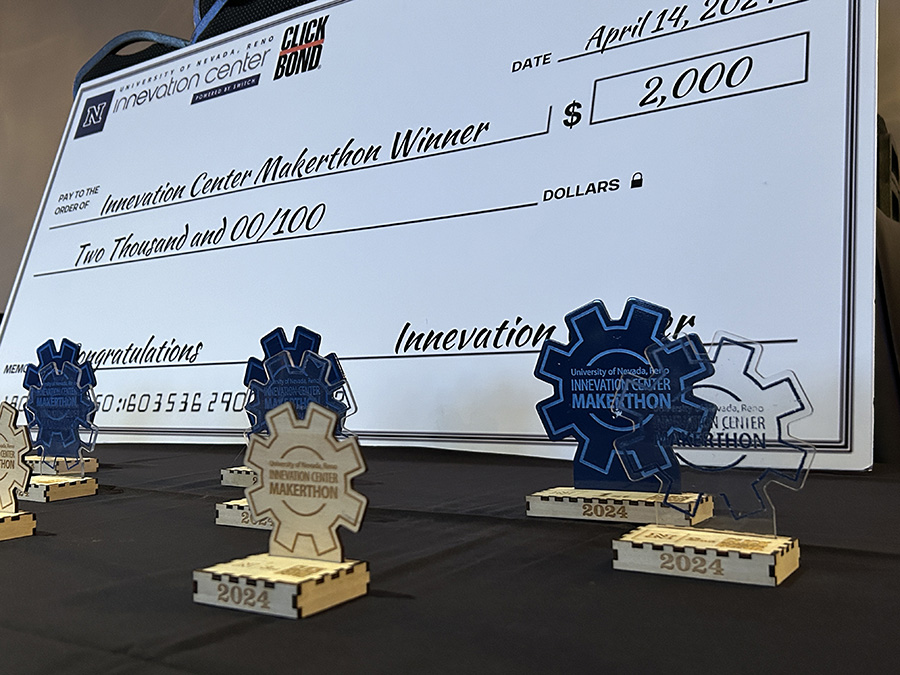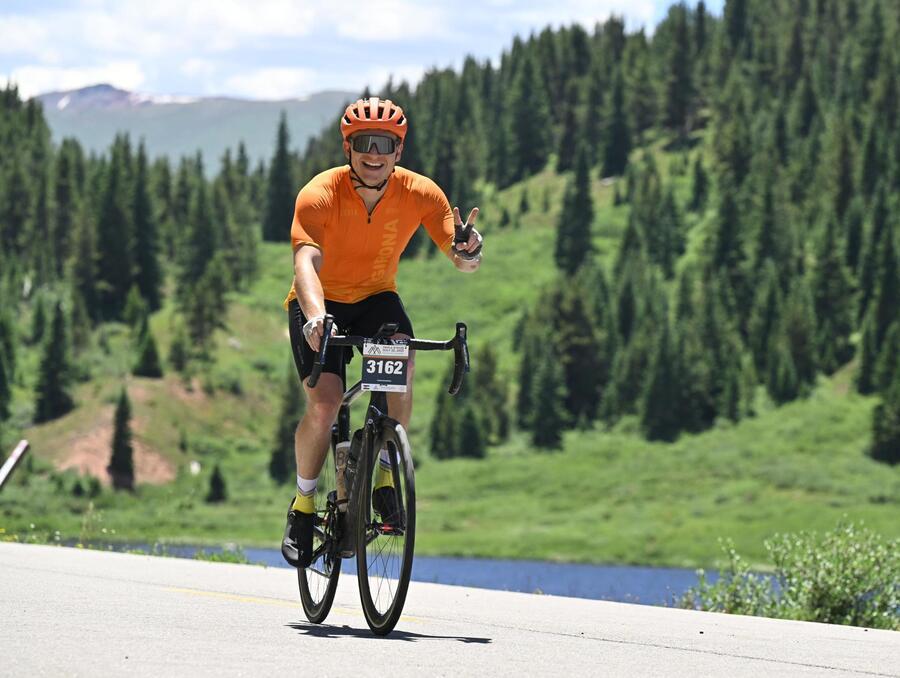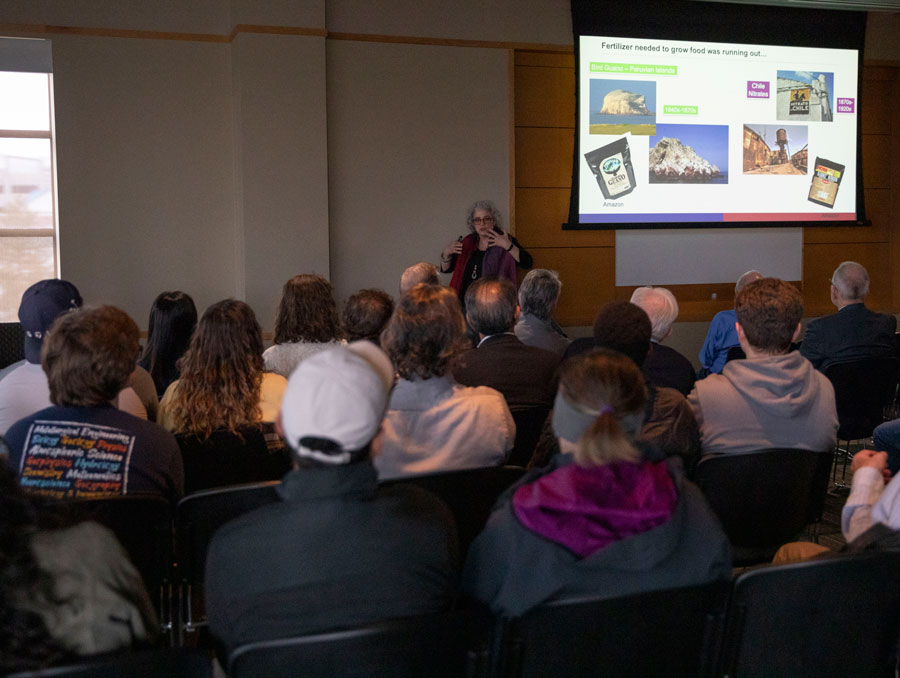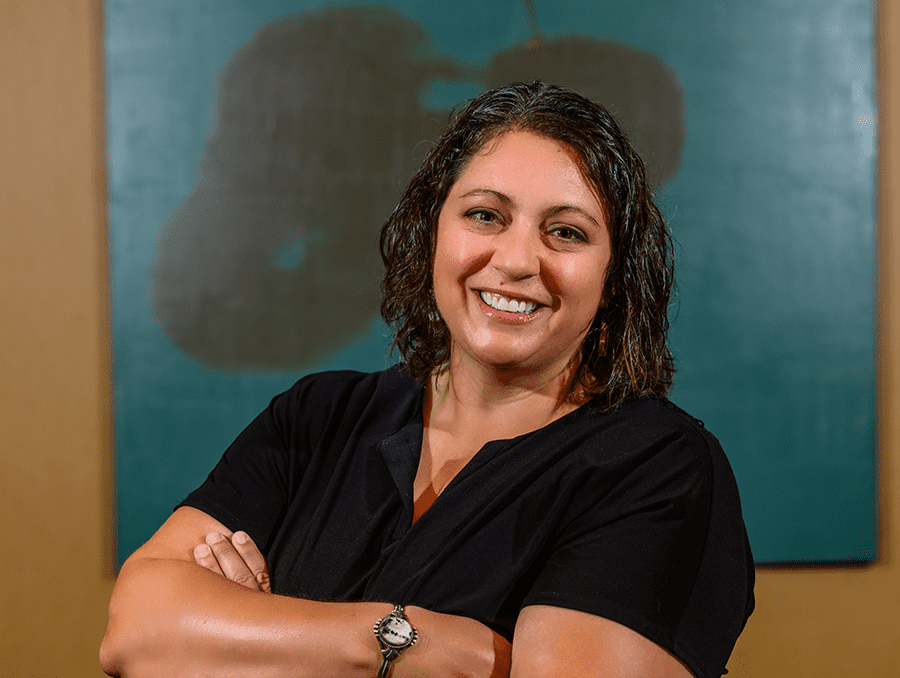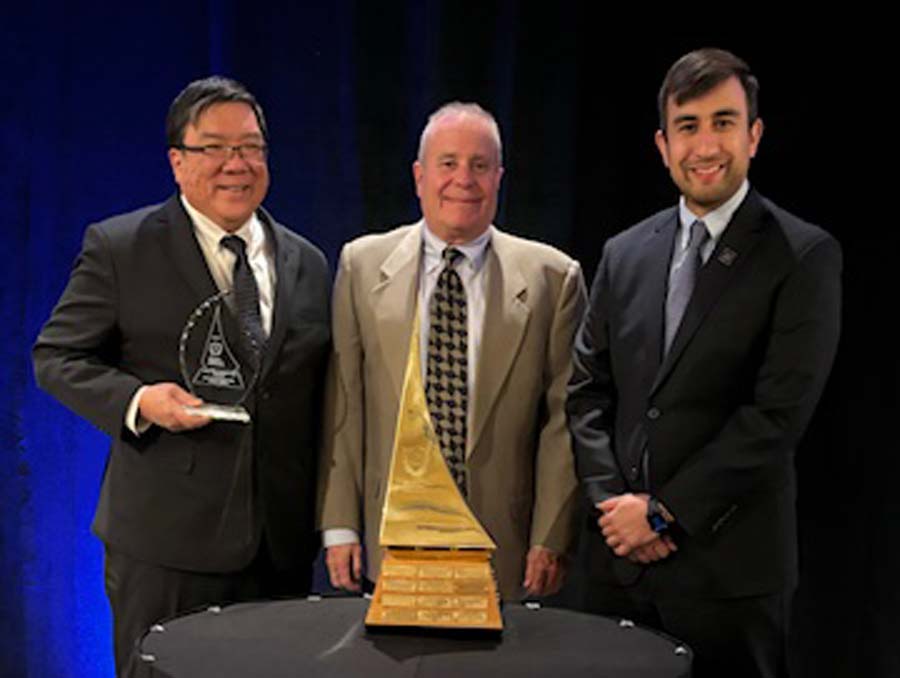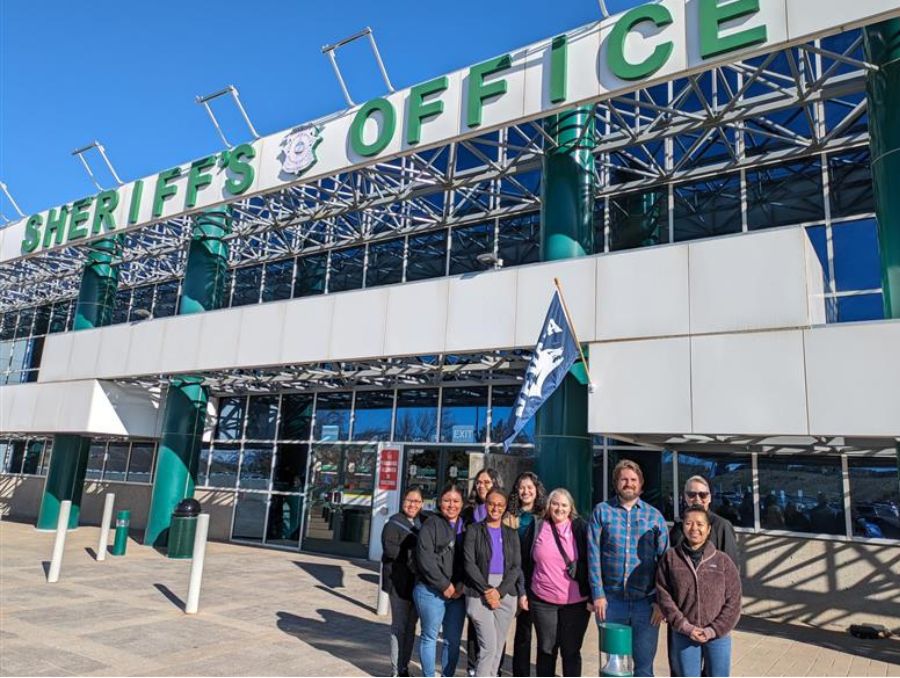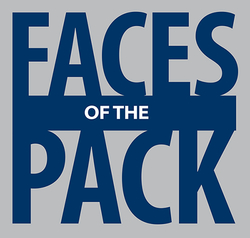 On October 20, 2020, the spacecraft OSIRIS-REx (Origins, Spectral Interpretation, Resource Identification, Security, Regolith Explorer) landed on the asteroid known as 101955 Bennu. In six seconds, while Bennu traveled at 63,000 miles per hour, the spacecraft collected likely more than the 60 grams of sample material required and safely backed away from the asteroid and into space. The so-called Touch-and-Go (TAG) event was the culmination of years of work and, in those six seconds, propelled knowledge forward—and backward—light years.
On October 20, 2020, the spacecraft OSIRIS-REx (Origins, Spectral Interpretation, Resource Identification, Security, Regolith Explorer) landed on the asteroid known as 101955 Bennu. In six seconds, while Bennu traveled at 63,000 miles per hour, the spacecraft collected likely more than the 60 grams of sample material required and safely backed away from the asteroid and into space. The so-called Touch-and-Go (TAG) event was the culmination of years of work and, in those six seconds, propelled knowledge forward—and backward—light years.
Approximately 200 million miles away, at a Lockheed Martin control center in Littleton, Colo., University of Nevada, Reno alumna Sierra Gonzales celebrated with the rest of the TAG team. As mission operations systems engineer, Gonzales not only had to help command the spacecraft but also had the responsibility for doing the final check when the time came to send the sequence to bring OSIRIS-REx to the surface of Bennu.
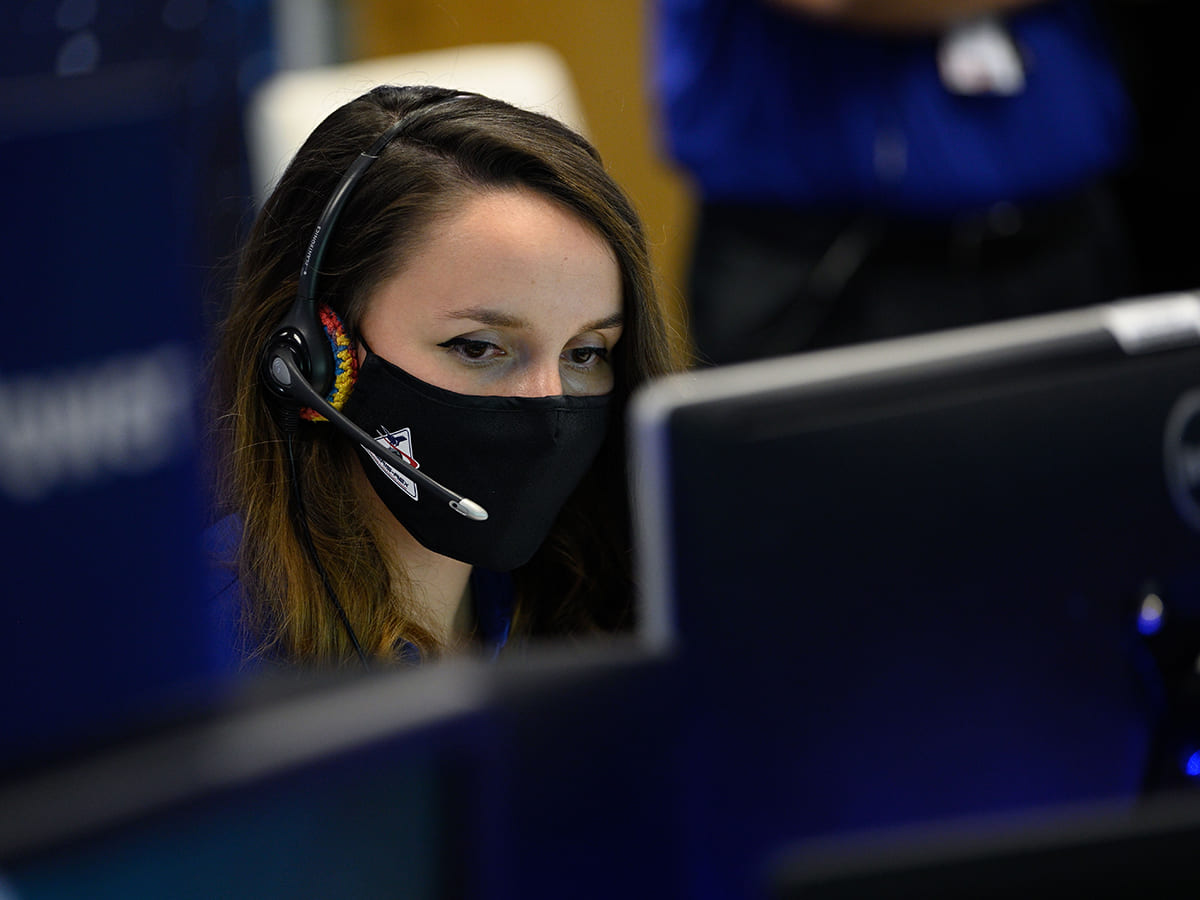 Photo courtesy of Lockheed Martin.
Photo courtesy of Lockheed Martin.“It’s like using a joystick, but there is no joystick. It’s real-time operating but with a time delay, like in the movies when all systems are Go and a character says, ‘3…2…1…mark’ and someone pushes a button. I pushed the button,” Gonzales explained. “As a real-time operator, I’m the last line of defense to the spacecraft.”
While many decisions are made up to this point, Gonzales was entrusted with the final check in the climax of the NASA project that will continue until OSIRIS-REx returns to Earth in 2023. Upon its arrival, scientists will have access to material that dates back 4.5 billion years. With a sample roughly equivalent in size to a full-size candy bar, scientists believe they will be able to unlock some of the secrets of the origins of the solar system.
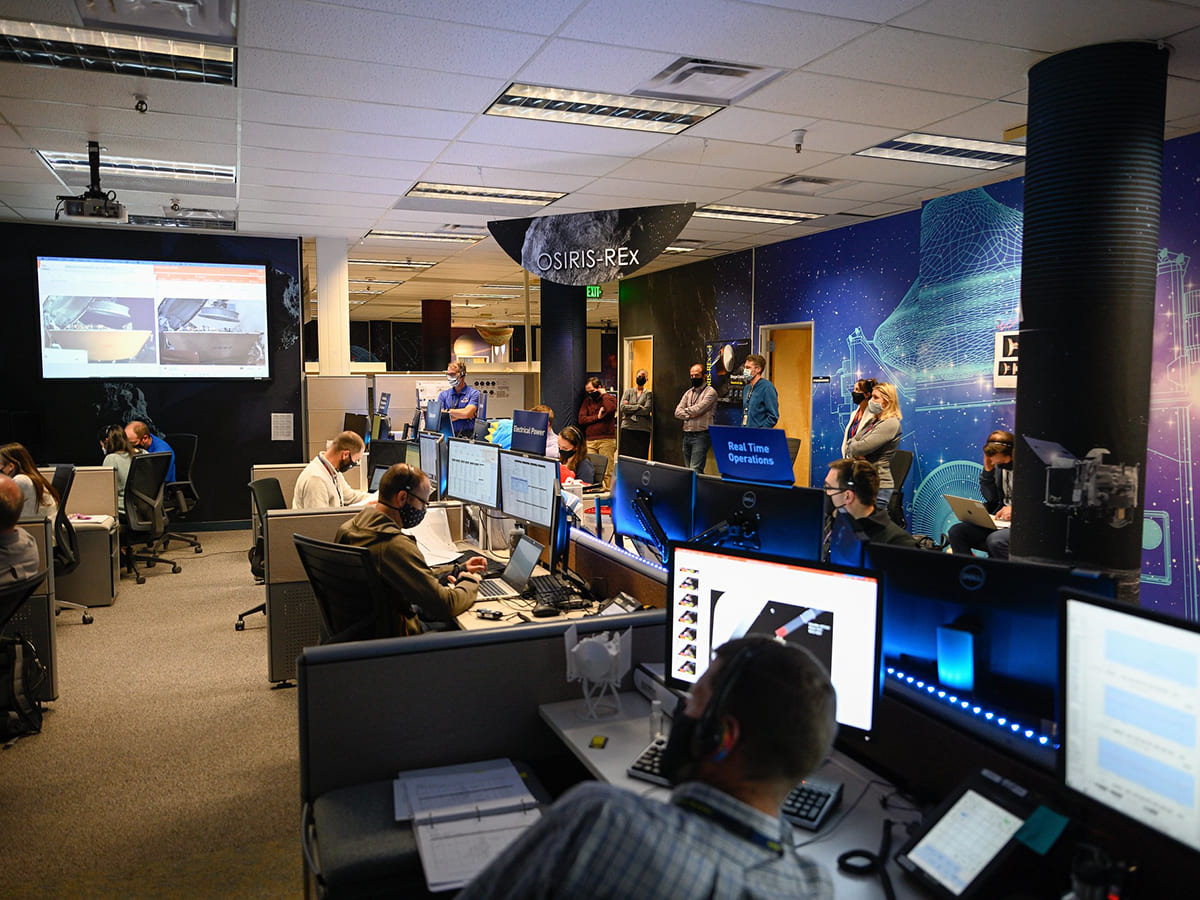 The TAG Team met an unexpected challenge when it was discovered that the Touch and Go Sample Acquisition Mechanism (TAGSAM) had collected an abundance of material, enough that it was leaking from the TAGSAM head. As systems engineer, Gonzales was responsible for getting the TAGSAM head locked and sealed in the Sample Return Capsule (SRC), a process that was scheduled to take four days. Working with the images on the screen in this photo and spacecraft data, Gonzales met the challenge in two days, maximizing the amount of material that would return to Earth. Of the experience, she said, “It was exhausting but so exciting to see that sample head click into place and the sample return capsule shut tight.” Photo courtesy of Lockheed Martin.
The TAG Team met an unexpected challenge when it was discovered that the Touch and Go Sample Acquisition Mechanism (TAGSAM) had collected an abundance of material, enough that it was leaking from the TAGSAM head. As systems engineer, Gonzales was responsible for getting the TAGSAM head locked and sealed in the Sample Return Capsule (SRC), a process that was scheduled to take four days. Working with the images on the screen in this photo and spacecraft data, Gonzales met the challenge in two days, maximizing the amount of material that would return to Earth. Of the experience, she said, “It was exhausting but so exciting to see that sample head click into place and the sample return capsule shut tight.” Photo courtesy of Lockheed Martin.“The goal of the mission is in the name of the spacecraft: Origins—learn about the origins of the solar system; Resource Identification—essentially, asteroid mining; Spectral Interpretation—determine how to identify different, possibly as-yet-unknown materials; Security—gain a better understanding of planetary bodies and how to protect earth,” Gonzales said and, with a smile, again invoked Hollywood to draw a parallel: “Like Armageddon. And finally,” she concluded, “Regolith Explorer—get an asteroid dirt sample.”
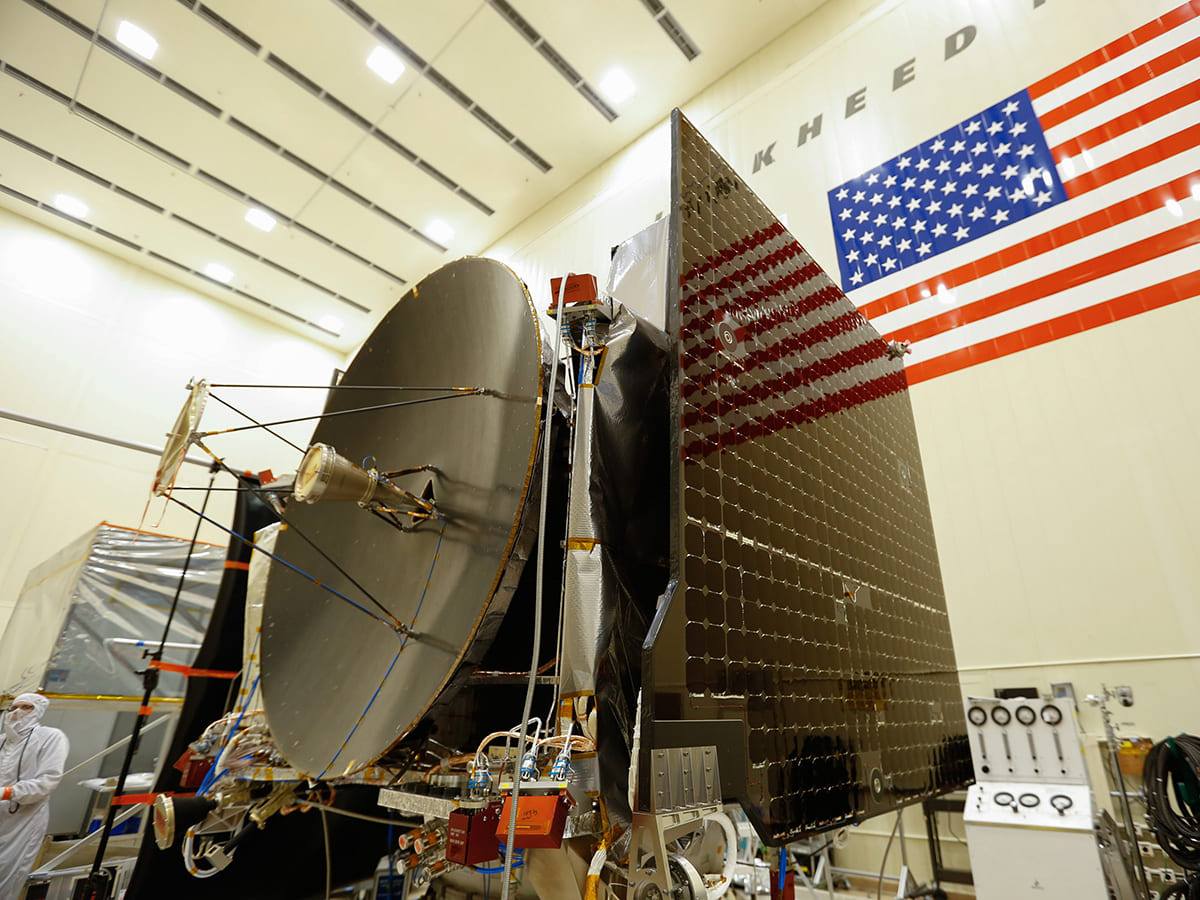 OSIRIS-REx solar array and high gain antenna installation at Lockheed Martin. Photo courtesy of Lockheed Martin.
OSIRIS-REx solar array and high gain antenna installation at Lockheed Martin. Photo courtesy of Lockheed Martin.While we will have to wait several years for scientists to analyze the sample, OSIRIS-REx has already made history. Launched in 2016, it began documenting and orbiting Bennu in December 2018. By New Year’s Day 2019, the program boasted two new records: Smallest body orbited and smallest orbit. But gaining records for Lockheed Martin, University of Arizona, and NASA Goddard are not the primary goals for Gonzales who, when reflecting on the importance of the mission, recalled her days as a member of the University’s chapter of the Society of Women Engineers (SWE).
“I remember going to a SWE conference and sitting in on a NASA panel. The presenter said about the work NASA does, ‘If you can’t dream big, you can’t solve problems at home.’ The asteroid Bennu was first identified in 1999, and I joined the OSIRIS-REx project in 2018. When we first started to orbit, I was fortunate enough to share in the excitement of those who had been working on the project for a very long time. It was surreal and amazing,” Gonzales said. “Being able to collect a sample off an asteroid should inspire hope and make the next set of engineers want to do good.”
Gonzales added, “Bennu will change history books. What we find out will change how we view ourselves and where we come from.”
An education founded on curiosity and creativity
As a high school student, Gonzales excelled in mathematics but also enjoyed the creativity of playing music. (When she isn’t making history, she continues to practice bass.) Believing engineering would provide a good marriage of mathematics and creativity, Gonzales recalled her childhood summer days spent in the University’s Fleischmann Planetarium and imagined pursuing a career with robotics in space.
“I was interested in what happens when there is no bounding case, and with space, we don’t know where the edge cases are yet.”
“I wanted to be able to contribute to the exploration of the final frontier,” she said. “I was interested in what happens when there is no bounding case, and with space, we don’t know where the edge cases are yet.”
After arriving at the University, Gonzales knew she had found the right profession when she took Engineering 100. A rite of passage for every student in the College of Engineering, the course is designed to provide a broad introduction to the discipline.
“Our very first project was making a hovercraft,” Gonzales said. “It was very appealing working on an interdisciplinary team. It was a good introduction to the program to get you hooked.”
Engineering 100 that semester was taught by Dr. Ann-Marie Vollstedt, who showed Gonzales a new way of approaching challenges and the engineering profession.
“Dr. Vollstedt never said, ‘You can’t do something,’” Gonzales said. “You never had that vibe from her. Instead, she had an open demeanor and was happy to answer questions.”
Later, Vollstedt would employ Gonzales as a teaching assistant for ENGR 100 and reflected on her contributions to the College and the profession: “Sierra has an exceptional work ethic and is a talented engineer. She was a great student, and we were lucky to have her on our teaching assistant team for ENGR 100 while she completed her Master’s degree. As a TA, she was a role model for her students and fellow TAs. She was always inspiring the team to pursue research and internship opportunities and to support women in engineering. It makes me very happy to see her in working at her dream job!”
With a positive outlook on the profession and the goal of working in space, Gonzales was off to the races. She declared her major as mechanical engineering and took advantage of the nascent Accelerated B.S./M.S. program. Designed to help students obtain their master’s degrees faster, it allowed Gonzales to complete six years of study in five years.
“The program was fairly new when I joined,” Gonzales said, “but being able to double-dip senior curriculum and graduate studies was very helpful. When I graduated, I was able to come into my job as a Level 2 rather than a Level 1, which meant I had better pay and more responsibilities. I really enjoyed that.”
In fact, when Gonzales finished her master’s degree, she had two job offers—one from Boeing and one from Lockheed Martin. The latter won her over when she realized how much she would be able to continue her education while on the job.
“Learning about space was a major selling point for me when I toured the Mission Support Area,” she said. “Being able to impact society from a scientific aspect was super warming, super satisfying. There is not enough time to learn about all of our missions, but we get to talk to the other teams, and we get to explore what their projects are about, and that’s really exciting.”
Developing supportive communities of engineers has always been important to Gonzales. As a sophomore, she became a member of the University’s chapter of the Society of Women Engineers. Designed to create opportunities for women in the engineering profession to meet one another and connect with industry partners, SWE is focused on the success of its members.
“The SWE program is really good at helping students develop their careers. The summer before I graduated, I had already interned with Lockheed Martin, thanks to SWE.”
“The SWE program is really good at helping students develop their careers,” Gonzales said. “The summer before I graduated, I had already interned with Lockheed Martin, thanks to SWE.”
Gonzales found her experience with SWE so rewarding that, as a graduate student, she successfully lobbied for the creation of a graduate liaison position that would allow her to continue to work with other women entering the field.
“It was important to me that we continue to expand the number and type of students who can join SWE,” she said.
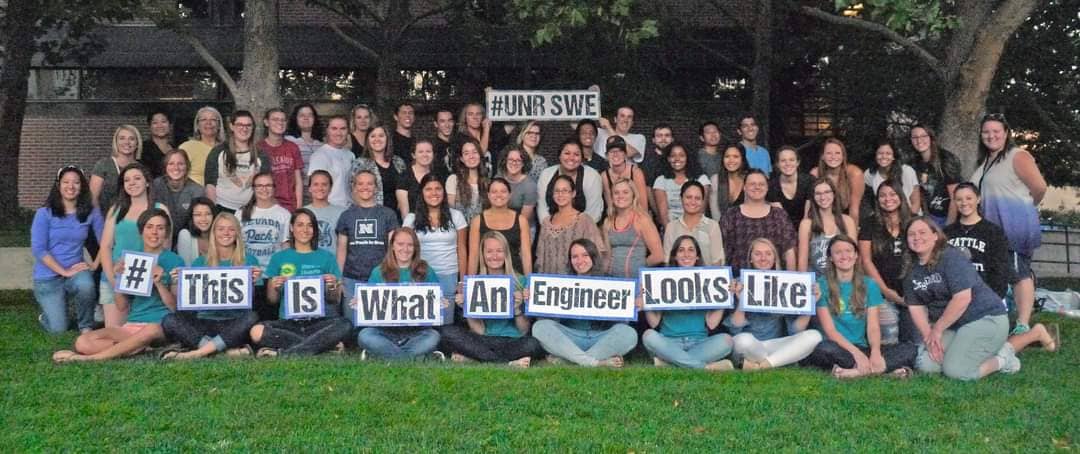 Gonzales organzied an event with SWE to promote the varying backgrounds and faces of engineers.
Gonzales organzied an event with SWE to promote the varying backgrounds and faces of engineers.Indira Chatterjee, the associate dean of the College of Engineering has been the faculty advisor for the University’s chapter of SWE for more than 30 years. Of Gonzales, she said, “I am so proud of Sierra’s accomplishments in the aerospace industry. While at the University, she was very active in the Society of Women Engineers (SWE) and contributed tremendously to the activities of this club. Having heard her keynote talk at an event organized by the Sierra Nevada Professional section of SWE, I was amazed at everything she had achieved and the projects she was leading related to space.”
Embracing opportunities
From the first hovercraft project in ENGR 100 to the completion of her thesis and on to her career, Gonzales has been drawn to the hands-on aspects of engineering. And she has always weaved her work into her education.
"In the makerspace, you broke things and learned how to put them back together.”
“I worked for DeLaMare [Engineering Library] for three years, and it was helpful in my development as an engineer,” she said. “It cultivated an environment of learning. In the makerspace, you broke things and learned how to put them back together.”
For her senior capstone project, Gonzales and her team of peers got to apply the principles they’d been mastering to solve a real-life problem. The University Police had set up a camera overlooking Mackay Stadium, but because it was mounted on a simple tripod, it was too bulky and too much of a trip hazard, to provide useful footage.
“We devised a mounting system using industrial glass movers,” she said. “It was the first time I was able to bring a product from paper to life.”
Although every University engineering student takes a capstone course, it is no wonder that Gonzales found the experience particularly meaningful. When asked about what advice she would give someone who wanted to follow her to the edge of the final frontier—and all the way back to the Big Bang—she emphasized the importance not only of taking opportunities but embracing them.
“Take opportunities whenever you can,” she said, “but don’t join clubs or groups if you won’t put the effort into it or get anything out of it. If you can only write ‘member’ and can’t say what you contributed or learned, it’s not worth your time. Find the worth in your experiences.”
Making science cheaper
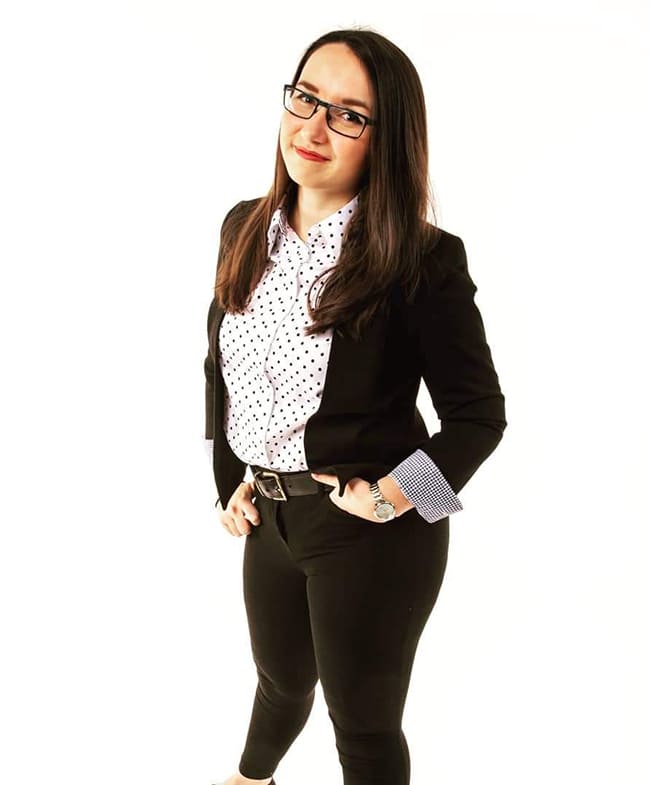
With her portion of the OSIRIS-REx project complete, Gonzales has now taken the role of Software Systems Engineer and Test Engineer of the Janus mission. Part of NASA’s SIMPLEx program, Janus are a pair of small satellites scheduled to visit a binary set of asteroids. Small is the operative word. While OSIRIS-REx is 8’ x 8’ x 10’, the Janus satellites are the size of a carry-on suitcase and “could fit in your car seat,” according to Gonzales. And that is precisely the point of the mission.
“OSIRIS-REx is the largest NASA sample return mission since Apollo, but every pound you launch costs more money” Gonzales explained. “With Janus, we’ll be able to collect a ton of data, serving the goal to produce more cost-effective science by using smaller, cheaper satellites to perform the mission.”
Currently, Gonzales is working on development, assembly, testing, and launching. Once the satellites are on their way in 2022, she will parallelly work on another new small satellite, Lunar Trailblazer, which will learn more about water on the moon. With Gonzales at the helm, there is little doubt that, when the Janus satellites reach their destination in 2026, the history books will have a new record or two penciled in—to be held only until her next mission.
